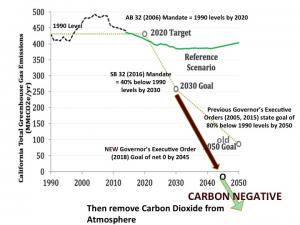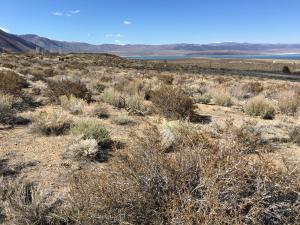 Sierra Club’s Ready for 100 Renewable Energy Campaign
Sierra Club’s Ready for 100 Renewable Energy Campaign
RF100 is the Sierra Club’s campaign for moving the country to renewable energy. The goals are to reach 100% Renewable Electricity by 2030 and 100% Renewable Energy by 2050 without negatively impacting the lower-income populations. Some members of the Range of Light Group have been researching how the Town of Mammoth Lakes (TOML) and Mono County could meet those goals. Here’s what we’ve learned. (RF100 factsheet)
It is Possible!
Aspen has already reached the goal of 100% renewable electricity and Lancaster too! The City of Lancaster started by installing rooftop solar on municipal buildings and set up a financing program that made solar more affordable for homes and businesses. The city also passed an ordinance mandating solar panels on new homes. Then it built a solar array big enough to meet city’s and its residents’ needs. Now, the city produces more solar energy per capita than any other city in California. And it’s not just good for the climate, but it saved costs and created local jobs.
Climate Action Plans or “CAPs”
Every town should have one or have the climate change actions built into their general plan and Mammoth, so far, does not. A climate action plan can be a separate plan or can be part of the general plan, but it needs to be part of every decision the city makes. A city can be carbon negative and save money. Within the CAP is an Energy Action Plan that describes where energy comes from and how much is used. It is important to de-politicize the CAP and allocate staff and money for creating it and implementing it. Along with the CAP, towns, cities, and counties need to establish a baseline of their GHG emissions. CAPs and emissions should be revised and measured every 5 years. California Adaptation Planning Guide
What is a Community Choice Aggregate (CCA)?
Recent California legislation allows towns, cities, and counties to manage their own power supply and to create their own power. There are different degrees of managing a power supply from buying power from utilities and just negotiating better rates for a community to running a utility. There are now 21 operational CCAs in California. Here are a few of them: Marin Clean Energy, Sonoma Clean Power, Lancaster Choice Energy, CleanPowerSF, East Bay Community Energy, San Diego CCA, Clean Power Alliance.
Please join us if you would like to work towards reducing the Eastern Sierra's carbon footprint. Contact Lynn at chairrolg@gmail.com or Don at condon.don@gmail.com to help.
What's Happening in the Eastern Sierra?
Mono and Inyo Counties make up the Eastern Sierra. Both counties have Climate Action Plans listing strategies to reduce energy consumption and to increase renewable energy. Both Counties have established baseline greenhouse gas emissions (GHGs) to see how well they are meeting their goals. In 2021 Mono County received a grant and will be revising its plan and re-calculating its GHG emissions. The two largest towns, Mammoth Lakes and Bishop, have not yet established baselines of their energy consumption and are dependent on grants to be able to do so. Read on...
What Role Do Counties Have in Meeting CA's Goals?
 California set ambitious climate change goals with the passage of AB32 in 2006 and SB32 in 2016. The state met the goal of AB32 four years early in 2016--reducing 1990 carbon emissions by 15% by 2020. However, the state is not on track to meet the goal of SB32 to reduce 1990 carbon emissions by 40% by 2030 or the goal to be carbon neutral by 2045. What role do counties play in helping get us there? Read on...
California set ambitious climate change goals with the passage of AB32 in 2006 and SB32 in 2016. The state met the goal of AB32 four years early in 2016--reducing 1990 carbon emissions by 15% by 2020. However, the state is not on track to meet the goal of SB32 to reduce 1990 carbon emissions by 40% by 2030 or the goal to be carbon neutral by 2045. What role do counties play in helping get us there? Read on...
CA's Zero Net Energy Law and the Tioga Inn Housing Project
 The Tioga Inn is one of the largest proposed housing developments in Mono County and will be subject to the state's new 2019 building code. California set a goal for all new residential construction to be Zero Net Energy (ZNE) by 2020 in the California Strategic Plan. The California Public Utilities Commission upgraded the building code to incorporate elements that would help the state meet those goals effective January 1 of this year. Read on...
The Tioga Inn is one of the largest proposed housing developments in Mono County and will be subject to the state's new 2019 building code. California set a goal for all new residential construction to be Zero Net Energy (ZNE) by 2020 in the California Strategic Plan. The California Public Utilities Commission upgraded the building code to incorporate elements that would help the state meet those goals effective January 1 of this year. Read on...